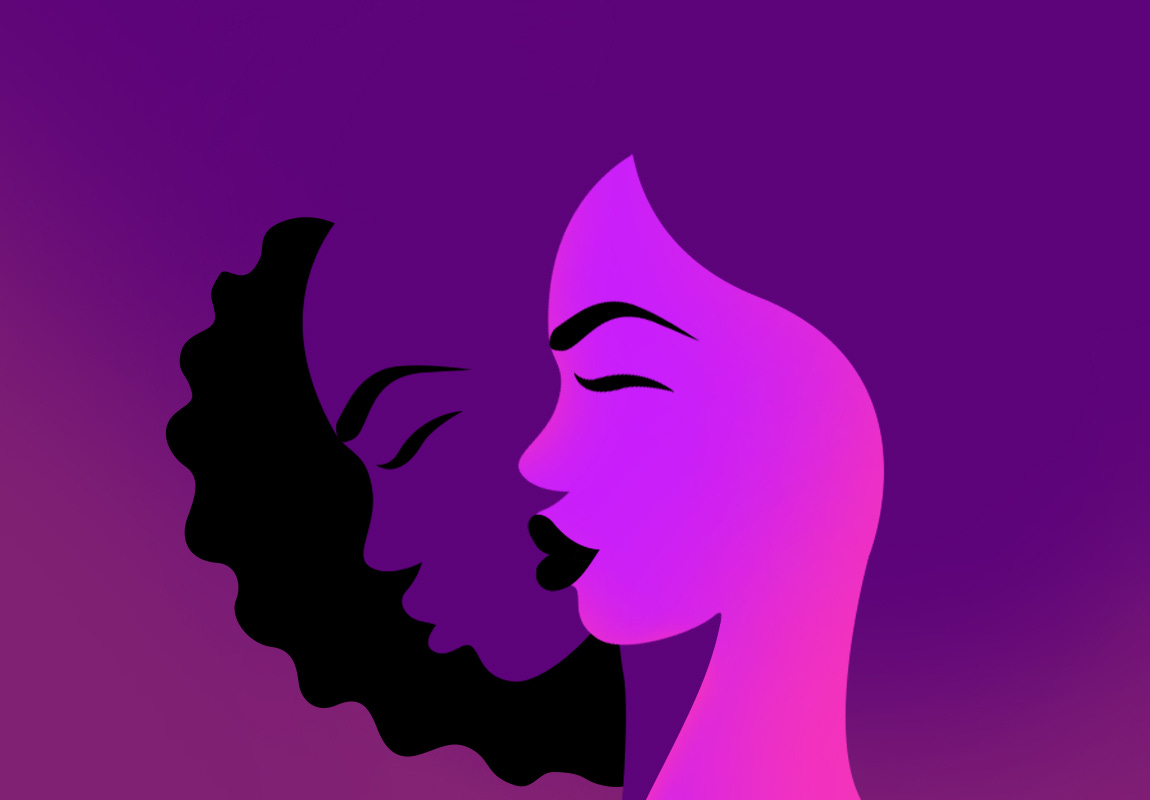Bipolar disorder or manic-depressive disorder, commonly known as bipolar affective disorder or manic depression, is a psychiatric condition that describes a group of mood disorders characterised by unusually elevated energy levels, cognition, and mood, with or without one or more depressive episodes.
Mania, and, in milder cases, hypomania are clinical terms for exuberant moods. Those with manic episodes are more likely to have depressive episodes, or symptoms, or a mixed episode, in which both mania and depression are active at the same time. These episodes are normally separated by times of ‘normal’ mood; nevertheless, in some people, sadness and mania can cycle back and forth quickly, a condition known as rapid cycling.
Though recurrent cycles of mania and depression have been recognised since the 6th century, Emil Kraepelin, a German psychiatrist was the first to coin the term manic-depressive insanity and to explain the clinical picture in 1899.
Depressive illnesses were once thought to be four to five times as common as bipolar disorder. Recent research contradicts this belief, claiming that depression and bipolar disorders are quite similar (Bowden, 1993). This is because sadness has long been thought to be more common, and, as a result, many people with bipolar illness are mistakenly categorised as having unipolar disorder because they have not yet experienced a manic or hypomanic episode. Psychotic symptoms, such as hallucinations or delusions, can accompany severe episodes of mania or depression.
Bipolar disorder is defined as a condition in which a person alternates between episodes of depression and mania.
Psychotic symptoms are often a reflection of a person’s low mood. For example, a person experiencing a manic episode may experience psychotic symptoms such as believing he or she is famous, wealthy, or possesses extraordinary abilities. In a similar manner, a depressed individual may assume that he or she is bankrupt and impoverished.
Symptoms of bipolar disorder
At least one episode of mania distinguishes bipolar disorder from major depression, or major depressive disorder (MDD). According to the major qualities of a certain episode, it is classed as depressed, manic, or mixed. Individuals who only experience one of these moods (for example, mania or sadness) are considered to have unipolar mood disorder. Owing to the rarity of experiencing manic symptoms alone, practically everyone with unipolar mood disorders suffers from unipolar depression.
Bipolar disorder is defined as a condition in which a person alternates between episodes of depression and mania. Bipolar disorder is a mental illness in which persons have periods of unusually elevated (manic or hypomanic) and, in many cases, excessively depressed moods that interfere with their ability to function.
Depressive episode
Depressed mood, anhedonia, psychomotor slowness, and emotions of pessimism and guilt are all symptoms of a depressive episode, which are typical of major depression. The major symptoms are the following:
➔ The amount of time spent sleeping and eating increases often. Guilty delusions are accompanied by self-loathing.
➔ In psychotic depression, hallucinations are prevalent, and some individuals experience them.
➔ Consistent emotions of sadness are among the signs and symptoms of bipolar disorder’s depressed phase.
➔ Emotions melancholy, worry, guilt, rage, loneliness, or hopelessness; sleep difficulties
➔ Loss of appetite; exhaustion and a loss of interest in normally pleasurable activities; difficulty in concentrating, loneliness, self-loathing, apathy or indifference; sexual apathy or disinterest
➔ Shyness or social anxiety, impatience, and chronic pain (with or without a known cause)
➔ A lack of motivation; and suicidal ideation that is severe
According to the American Psychiatric Association, the person may become psychotic in severe situations, a condition known as severe bipolar depression with psychotic symptoms. Though some studies report higher rates of psychomotor retardation, overeating, and oversleeping in the depressive phase of bipolar disorder, the depressive form of bipolar disorder is usually clinically indistinguishable from major depression.
Manic episode
A manic episode is characterised by a persistently high, expansive, or irritated mood along with three or more of the following additional symptoms over the course of one week:
➔ Inflated self-esteem or grandiosity, lowered sleep requirements, increased talkativeness, persistently elevated mood, flight of ideas or racing thoughts, destructibility, and enhanced goal-directed activity
➔ Bipolar-disorder patients frequently perceive an increase in energy and a decreased need for sleep.
➔ The patient’s speech may seem rushed, and their thoughts may be racing.
➔ A person in a manic condition has a short attention span and is quickly distracted. His/her judgement may be compromised, and they may go on spending binges or indulge in behaviour that is out of character for them.
➔ Substance abuse, such as alcohol or other depressants, cocaine or other stimulants, or sleeping drugs, is a possibility.
➔ The patient may become hostile, intolerant, or obtrusive in their behaviour.
➔ May feel helpless or unstoppable;
➔ may believe he/she has been ‘selected’ for a ‘unique mission’; or theymay have other grandiose or delusory views. Sexual arousal may rise.
➔ Manic patients may engage in a variety of enjoyable, high-risk behaviours (for example, gambling, risky sports, promiscuous sexual activity) indefinitely, obsessively, and impulsively without regard for their potential for injury. The symptoms are so strong that they make functioning difficult.
➔ Patients who are experiencing a manic episode are usually joyful and flamboyantly or colourfully dressed, with an authoritative demeanour and an unstoppable flow of speech. It is possible that patients will form clang associations (new thoughts that are triggered by word sounds rather than meaning).
Patients who are easily distracted, may jump from one theme or activity to the next. They do, however, believe they are in the healthiest mental state possible. Insight deficits and enhanced activity capacity are common. This can result in intrusive behaviour, which is a dangerous combination. Patients may believe they are being unfairly punished or persecuted. As a result, they may end up posing a risk to themselves or others. Patients often report racing thoughts as a symptom of accelerated mental activity, or ‘flights of fancy’.
Hypomanic episode
A hypomanic episode is a milder form of mania, characterised by a separate episode, lasting four or more days and differing significantly from the patient’s regular non-depressed mood. Hypomania is a mild-to-moderate form of mania.
➔ Mania is characterised by optimism, increased speech and activity pressure, diminished motivation, and reduced need for sleep. Hypomania, unlike mania, does not generally impair functioning.
➔ Many hypomaniacs are actually more productive than the average person. Some individuals show poor judgement and impatience, while others show greater creativity.
➔ Hypersexuality affects a large number of people. Most people have high energy and are more active than usual. However, they do not have delusions or hallucinations.
➔ During the hypomanic period, an elevated mood, the need for sleep decreases, and psychomotor activity increases, and there is an elevated sense of self.
➔ Hypomanic episodes can be beneficial for some patients because they produce a lot of energy, creativity, confidence, and above-average social functioning.
➔ Many people are unwilling to leave their pleasurable, euphoric state. Some people function quite well, and most people’s functioning is not significantly impaired.
➔ In some patients, however, hypomania manifests as distractibility, irritability, and labile mood, which the patient and others find less appealing.
Mixed episode
A mixed episode combines depressive and manic or hypomanic features; both mania and depression criteria are met.
➔ Patients, for example, may experience a brief burst of tears during the height of mania, or their thoughts may race during a depressive episode. Often, the switch is triggered by circadian factors (for example, going to bed depressed and waking up hypomanic). The entire episode is mixed in at least one-third of people with bipolar disorder.
➔ A dysphoric excited mood, crying, interrupted sleep, racing thoughts, grandiosity, psychomotor restlessness, suicidal ideation, persecutory delusions, auditory hallucinations, indecisiveness, and confusion are common symptoms. This condition is known as dysphoric mania (that is, prominent depressive symptoms superimposed on manic psychosis).
Causes of Bipolar Disorder
Biological factors
According to studies conducted on the families of people diagnosed with bipolar disorder, there is a strong tendency for other family members to have a higher-than-expected risk for a mood disorder of some kind, including bipolar disorder. Studies by Peter McGuffin and Robert L Katz shows that about 9% of the first-degree relatives of a person with bipolar illness can be expected to have bipolar disorder (nine times the rate of the disorder in the general population).
Though family studies alone cannot establish a genetic basis for the disorder, twin studies also point to genetics. Twin studies have been limited by small sample sizes, but they have revealed a significant genetic contribution as well as environmental influence.
Psychological factors
Research done by Alessandro Serretti and Laura Mandelli suggests that psychological factors play an important role in the onset and progression of bipolar disorder, and that individual psychosocial variables may interact with genetic dispositions. A study by Lauren B Alloy shows that recent life events and interpersonal relationships increase the likelihood of the onset and recurrence of bipolar mood episodes, just as they do for the onset and recurrence of unipolar depression.
Environmental stressors can sometimes play a role in triggering an initial or subsequent manic episode. According to David J Miklowitz, early adversity and conflict are likely to make developmental challenges in adolescence, and are likely a risk factor for developing bipolar disorder.
Treatment
Bipolar disorder is treated using a variety of pharmacological and psychotherapeutic techniques. Hospitalisation may be necessary, especially if manic episodes are present in Bipolar I category. Because bipolar disorder is a chronic and recurring illness, most people who suffer from it must live with it for the rest of their lives. Long-term treatment is required to keep bipolar symptoms under control. Efficient medication and psychotherapy are part of the treatment plan to prevent relapses and reduce symptom severity.
Now put on your thinking hats and think about the following questions for a couple of minutes.
How would you explain the term “bipolar disorder” to your students?
Can you think of some factors that may contribute to bipolar disorder?
Can you think of the ways to help a friend or relative who is suffering from bipolar disorder?
Write down your thoughts and discuss them with your students, children and your colleagues. Listen to their views and compare them with your own. As you listen to others, note how similar or different your views are to others’.
Thank you for listening. Subscribe to The Scando Review on thescandoreview.com.
Happy Teaching!













Bipolar disorder: A mental condition marked by severe mood swings